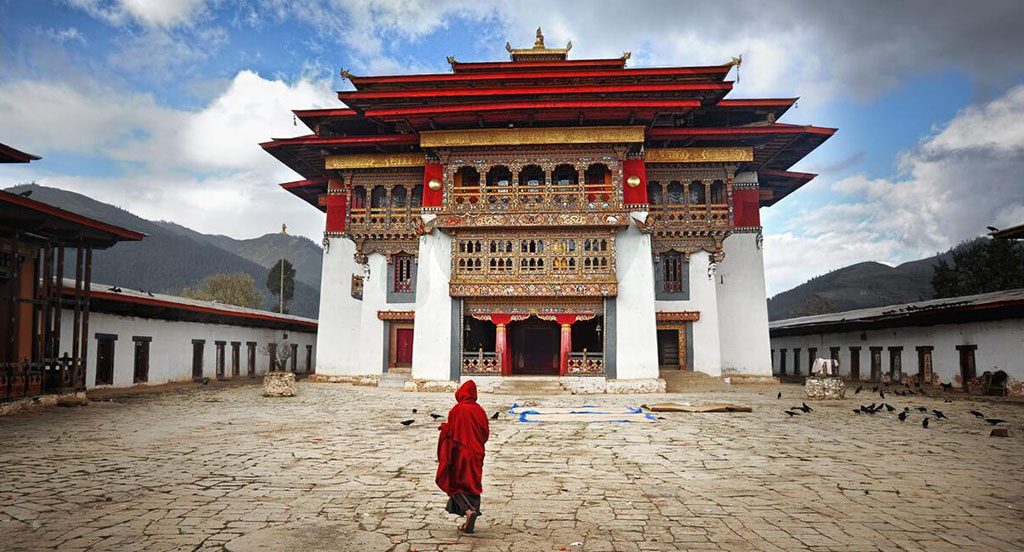
Meditation can help you get through the darkest of days and difficult moments!
It’s arguably the easiest and most affordable approach to staying optimistic, focused, and mentally fit.
You can meditate wherever you want! You may do it at the park, in your study, on the commuter bus, or anywhere else as long as you breathe deeply and remain focused.
Monasteries are the most well-known venues for meditation in Bhutan.
Monks spend their entire lives in monasteries, where they meditate, pray, and practice Buddhism.
Immerse yourself in the Himalayan culture and join a morning meditation session with little monks to maintain emotional stability and tranquility.
Remember to meditate in one of the monasteries listed below when you visit Bhutan. You will attain a positive mindset and compassion after meditation.
A ‘peaceful mind’ is the nicest souvenir you can take from Bhutan!
This blog includes:
- Paro Taktsang – Tiger’s Nest Monastery
- Background History of Paro Taktshang
- Dechenphu Lhakhang
- Background History of Dechenphu Lhakhang
- Pangri Zampa Lhakhang
- Background History of Pangri Zampa Lhakhang
- Tango Monastery
- Background History of Tango Monastery
- Paro Kyichu Lhakhang
- Background History of Kyichu Lhakhang
1. Paro Taktsang – Tiger’s Nest Monastery
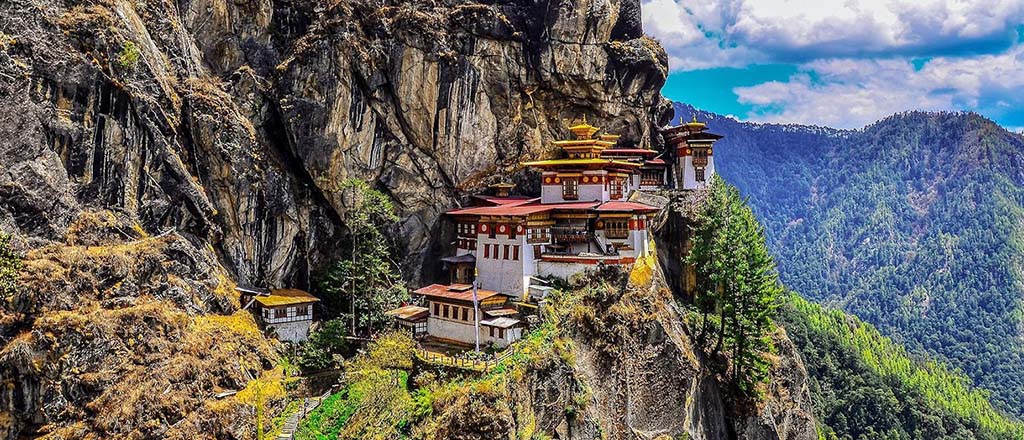
Paro Taktsang, also known as The Tiger’s Nest Monastery, is one of the most popular venues for meditation in Bhutan.
This monastery is an important Buddhist landmark, perched on a cliff 800 meters (2,600 feet) above the valley floor, at 2,950 meters (9,678 feet).
It is one of the Himalayan’s most revered pilgrimage sites.
The temple’s 2-3 hour trek takes you through a lush coniferous forest before arriving at the cliff’s edge.
You can enjoy the fantastic vistas of green valleys and mountain peaks as you climb up the hill.
Paro Taktsang holds religious and historical significance, and it’s also a perfect place for meditating.
Once you reach the monastery, it’s different from the low land of the Paro valley.
The monastery’s vicinity is a perfect getaway from the city’s daily hum-drums and the sounds of revving engines. It’s peaceful and serene, surrounded by lush conifers!
Background History of Paro Taktshang
In the 7th century, Guru Padmasambhava meditated in a cave on a sheer rock face for three months.
Then, he transformed into Guru Dorji Drolo (one of the eight manifestations) and rode a tigress astride to defeat the evil spirits in the area.
According to mythology, the tigress was Guru Rinpoche’s consort, Yeshi Tshogyal, who had transformed herself into a fearsome tigress to control spirits.
It is believed that the tigress carried Guru Rinpoche from Singye Dzong in eastern Bhutan to Paro Taktsang in the west.
As a result, Paro Taktsang (Tiger’s Nest) became one of Bhutan’s most sacred Buddhist sites for meditation in Bhutan.
2. Dechenphu Lhakhang
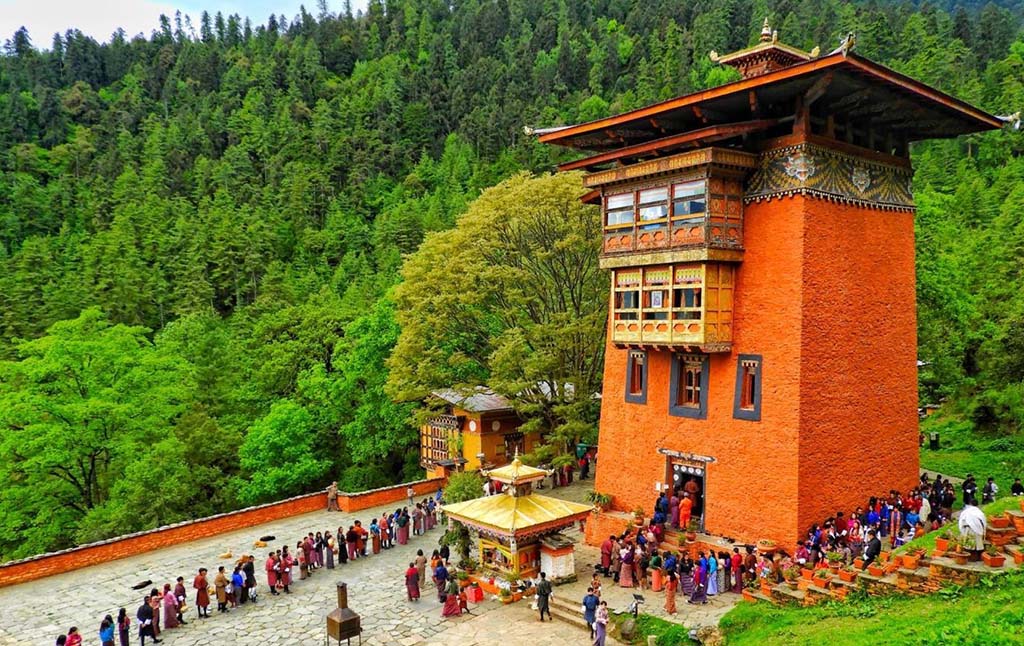
Dechenphug Lhakhang is a fortified monastery located on the western slope of the Thimphu valley.
The monastery is surrounded by a vast forest with no other local development. So, it’s an ideal spot for meditation in Bhutan.
Apart from meditation, people believe that the powerful local deity, Aap Gyenyen, at the monastery provides protection and grants wishes.
That’s why the location is popular among people embarking on lengthy journeys – students taking examinations, business people making decisions, politicians running for office, etc.
Background History of Dechenphu Lhakhang
Dampa, the son of Phajo Drugom Shigpo (1184-1251), who propagated the Drukpa style of Buddhism throughout Bhutan, built Dechenphu Monastery in the 12th century.
The monastery was built on a ground that has been linked to Aap Genynyen, a warrior god, since antiquity.
Kunga Singye, the 7th abbot of Tibet’s Ralung monastery, arrived at Dechenphu and named Geynyen the spirit guardian of Thimphu valley.
According to mythology, Jagpa Melen (another name for Geynyen, meaning “Fire Fetching Brigand and Supreme Warlord”) disappeared into the stone.
The warlord is said to return from the stone when Bhutan is most in need and rescue the country.
3. Pangri Zampa Lhakhang
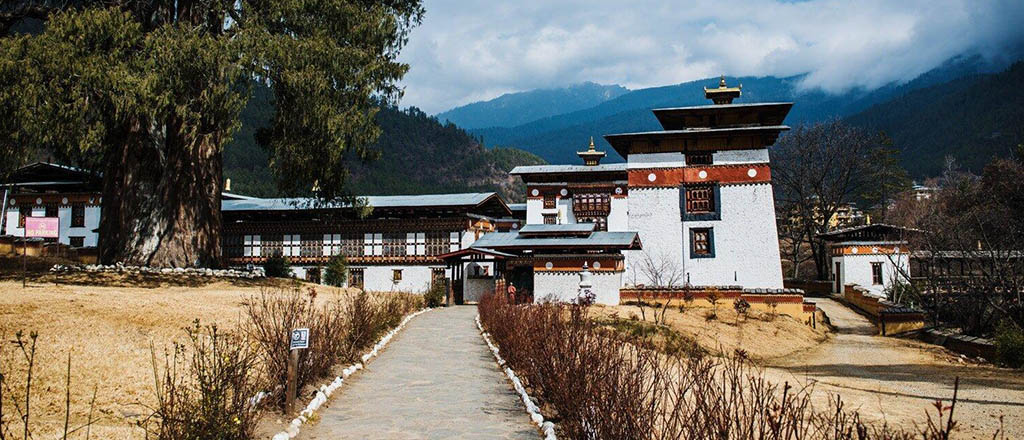
The Pangri Zampa Monastery houses the Kingdom’s Royal College of Astrology, where students can study astrology for six years.
Bhutanese people are big believers in astrology. Even today, Bhutanese make big decisions only after consulting an astrologer, whether it is building a house, starting a business, or selecting a life partner.
Besides the astrological drama, the monastery is the hot spot for meditation in Bhutan!
The peaceful Pangri Zampa monastery sits on the bank of Wang Chhu, far away from the city.
Two giant cypress trees (which claim to be the biggest in the country) and colorful prayer flags surround the monastery.
Mix in with the monks and meditate for a while to heal your soul!
Forget about the past and future. Just give some time to focus on breathing and being grateful for what you have and who you are!
Background History of Pangri Zampa Lhakhang
In 1529, Tibetan Lama Ngawang Chogyal and his son Nagi Wangchuk arrived in Bhutan.
He built a small temple called Druk Phodrang (“Dragon’s Castle) near Pangri Zampa Monastery.
This temple was cared for by his family until 1616, when Zhabdrung arrived in Bhutan and began unifying the kingdom.
In another legend, Zhabdrung Ngawang Namgyal pursued a raven south from Tibet, and the raven vanished here.
So, he built a house and moved in, and later Desi Tenzin Ragbay transformed it into a temple.
4. Tango Monastery
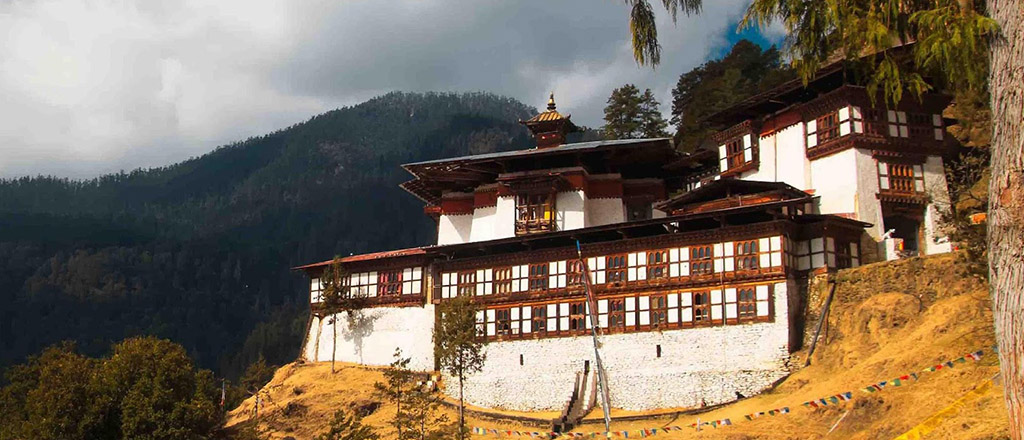
Tango Monastery enhances one’s trip experience with its tranquil atmosphere and charming surroundings.
The Tango Monastery is a famous Buddhist learning center in Bhutan, located near the Cheri Mountains in Thimphu.
The one-hour trek to the monastery’s summit is well worth it! It’s a popular site for meditation in Bhutan.
The monastery’s yearly celebration, Yarney, gathers hundreds of Bhutanese.
It lasts for a month and a half, where monks gather and take special vows during the occasion.
Visit the monastery to meditate if you happen to visit Bhutan during the time of Yarney!
The atmosphere is relaxing, and you will feel more refreshed and enriched after meditating.
Background History of Tango Monastery
The Tango Monastery, founded in the 12th century by Phajo Drugom Zhigpo, is one of Bhutan’s oldest monasteries.
During his visit, he observed a cliff in the shape of God Tandin enveloped in flames and heard a horse neigh.
This was interpreted as a sign that he should build a monastery in the place.
So, Tango Monastery gets its name from the term “horse head.”
5. Paro Kyichu Lhakhang
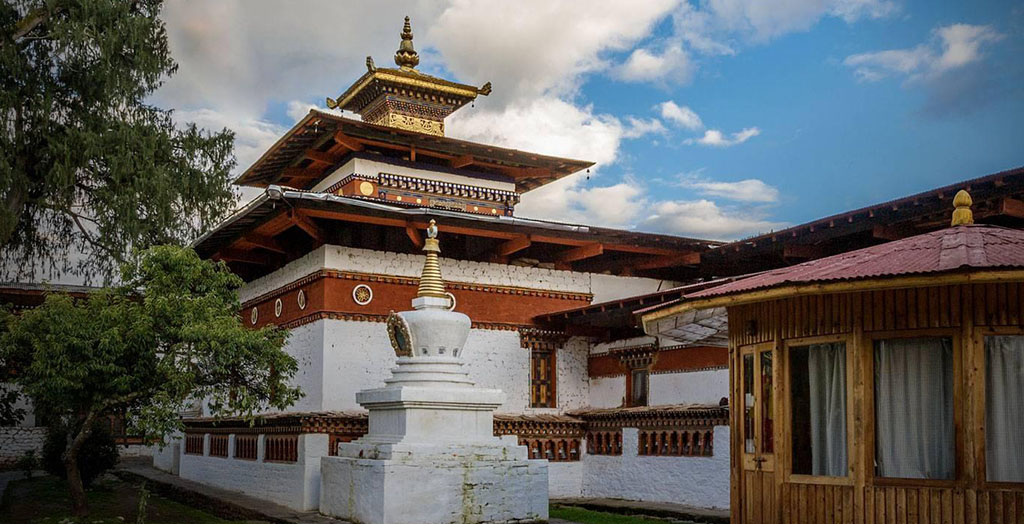
Kyichu Lhakhang, a majestic monastery of immense importance, was built in the 7th century. It is located in the Lango Gewog of Paro, Bhutan.
The monastery has stunning paintings and elaborately crafted structures of Buddhist figures.
The unique prayer wheels are said to have been blessed by several Buddhist saints, including Guru Rinpoche, Phajo Dugom Zhigpo, and Lam Kha Nga.
It contains a wealth of information about Bhutan dating back to its inception.
You can learn many interesting facts about the Himalayan Kingdom at this heavenly location.
It is also a popular place for pilgrimage and meditation in Bhutan. Many believers spend their vacation meditating and praying at Kyichu for healthy and prosperous lives.
Bhutan has many spectacular wonders for its visitors, not just the monasteries and meditation sites.
Background History of Kyichu Lhakhang
The history of Kyichu Lhakhang is extensive and fascinating!
It was built in the 7th century by Songsten Gampo, a Tibetan Emperor, to fight a giantess who was preventing the spread of Buddhism.
According to legend, the emperor erected the Kyichu Lhakhang in one night!
It was one of the 12 temples in a network of 108 temples built according to certain plans.
Final Thoughts
The five monasteries listed above are some of the best to meditate and find happiness in Bhutan.
These are just a few of many Buddhist monasteries in the country. You can also visit other monasteries for meditation in Bhutan.
Book your trip with us if you want to enjoy the beautiful sceneries and meditate in the religious monasteries of Bhutan.
We at Norbu Bhutan offer various tour packages to ensure you have a wonderful trip! Contact us for any information regarding your trip to Bhutan!


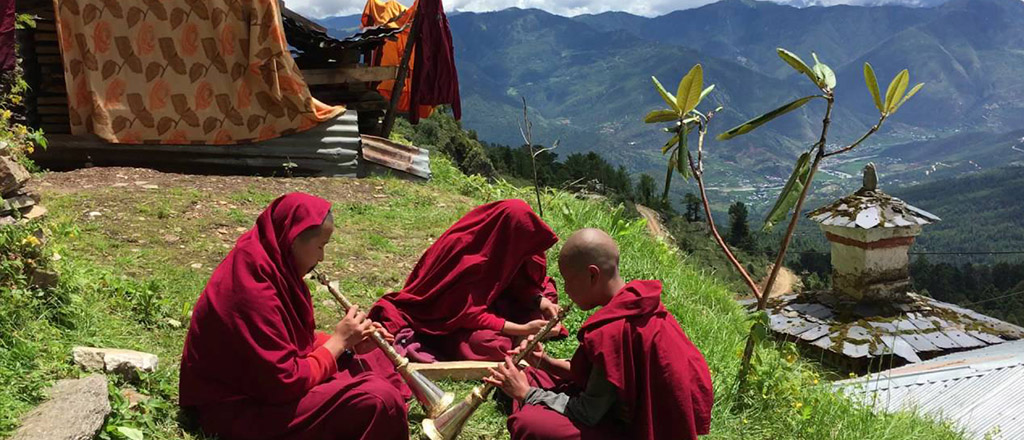
No responses yet